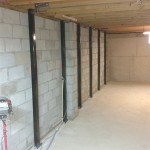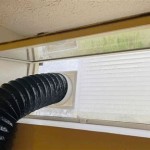What Should The Humidity Level Be In A Basement?
Basements, often considered the forgotten space in a home, can become a breeding ground for various problems if not properly maintained. One of the most significant factors affecting a basement's health is humidity. Excessive moisture can lead to mold growth, structural damage, and create an uncomfortable environment. Understanding the ideal humidity levels for a basement is crucial to ensure its longevity and safety.
Ideal Humidity Levels for a Basement
A healthy humidity level for a basement is generally considered to be between 30% and 50%. This range helps prevent the growth of mold, mildew, and other microorganisms that thrive in damp conditions. It also minimizes the risk of condensation and wood rot, which can lead to structural damage. Maintaining a humidity level within this range is essential for protecting the basement from various potential issues.
Factors Affecting Basement Humidity
Several factors can influence the humidity levels in a basement, including:
- Climate: Regions with high humidity levels naturally contribute to higher basement humidity.
- Soil conditions: Damp or waterlogged soil surrounding the foundation can seep into the basement, increasing moisture levels.
- Poor Ventilation: Inadequate ventilation traps moisture inside the basement, making it difficult for it to escape.
- Water leaks: Leaky pipes, faucets, or even cracked foundations can introduce significant amounts of water into the basement, leading to excessive humidity.
- Household Activities: Activities like showering, cooking, and drying laundry can contribute to humidity buildup in the basement, especially if there is limited ventilation.
Strategies for Maintaining Optimal Humidity Levels
There are multiple strategies you can implement to control the humidity in your basement and maintain a healthy environment:
1. Ventilation
Proper ventilation is crucial for removing excess moisture from the basement. This can be achieved through various methods:
- Windows: Opening basement windows, especially during drier periods, allows air circulation and removes moisture.
- Exhaust Fans: Installing exhaust fans in areas like bathrooms and laundry rooms can vent moisture outside, preventing it from accumulating in the basement.
- Whole-House Ventilation: For larger homes or basements with limited natural ventilation, a whole-house ventilation system can create a continuous flow of fresh air, removing humidity and improving air quality.
2. Dehumidification
When natural ventilation is insufficient or during periods of high humidity, dehumidifiers are essential for controlling moisture levels.
- Portable Dehumidifiers: These units are readily available and can effectively remove moisture from smaller areas.
- Whole-House Dehumidifiers: For larger basements or entire homes, whole-house dehumidifiers can efficiently remove moisture from the entire space.
- Choosing the Right Dehumidifier: It is crucial to select a dehumidifier with the appropriate capacity for the size of your basement to ensure effective moisture removal.
3. Addressing Moisture Sources
Identifying and addressing any sources of water leaks is crucial for preventing excess humidity. This includes:
- Inspecting Pipes and Faucets: Regularly inspect pipes and faucets for leaks and promptly repair any issues.
- Checking Foundations: Look for cracks or imperfections in the foundation that may allow water to seep into the basement. Seal any cracks and consider professional waterproofing if necessary.
- Diverting Rainwater: Ensure that gutters and downspouts effectively divert rainwater away from the foundation, preventing water accumulation around the basement walls.
4. Maintaining a Dry Environment
Simple measures can help maintain a dry environment in the basement:
- Use a Damp-Proofing Paint: Paint basement walls with a damp-proof sealant to protect them from moisture absorption.
- Store Items Properly: Store items off the floor, especially items made of wood, to prevent them from absorbing moisture.
- Regular Cleaning: Regularly clean the basement floor and walls to remove dust, debris, and moisture buildup.
By implementing these strategies and maintaining close attention to basement humidity levels, homeowners can create a healthy, comfortable, and safe environment for living, working, or storing belongings.

What Is The Ideal Basement Humidity Level Epp Foundation Repair

Basement Humidity Levels Variations Impacts And Controling

How To Lower Your Basement S Humidity Level

How To Lower Your Basement S Humidity Level

What Is The Ideal Basement Humidity Level Epp Foundation Repair

Basement Humidity Levels Variations Impacts And Controling

What Should Humidity Be In A Crawl Space Nia

How To Achieve An Ideal Basement Humidity Of 30 50

Basement Humidity Levels Variations Impacts And Controling

How To Know Your Basement Humidity Level Rescon Solutions
Related Posts







